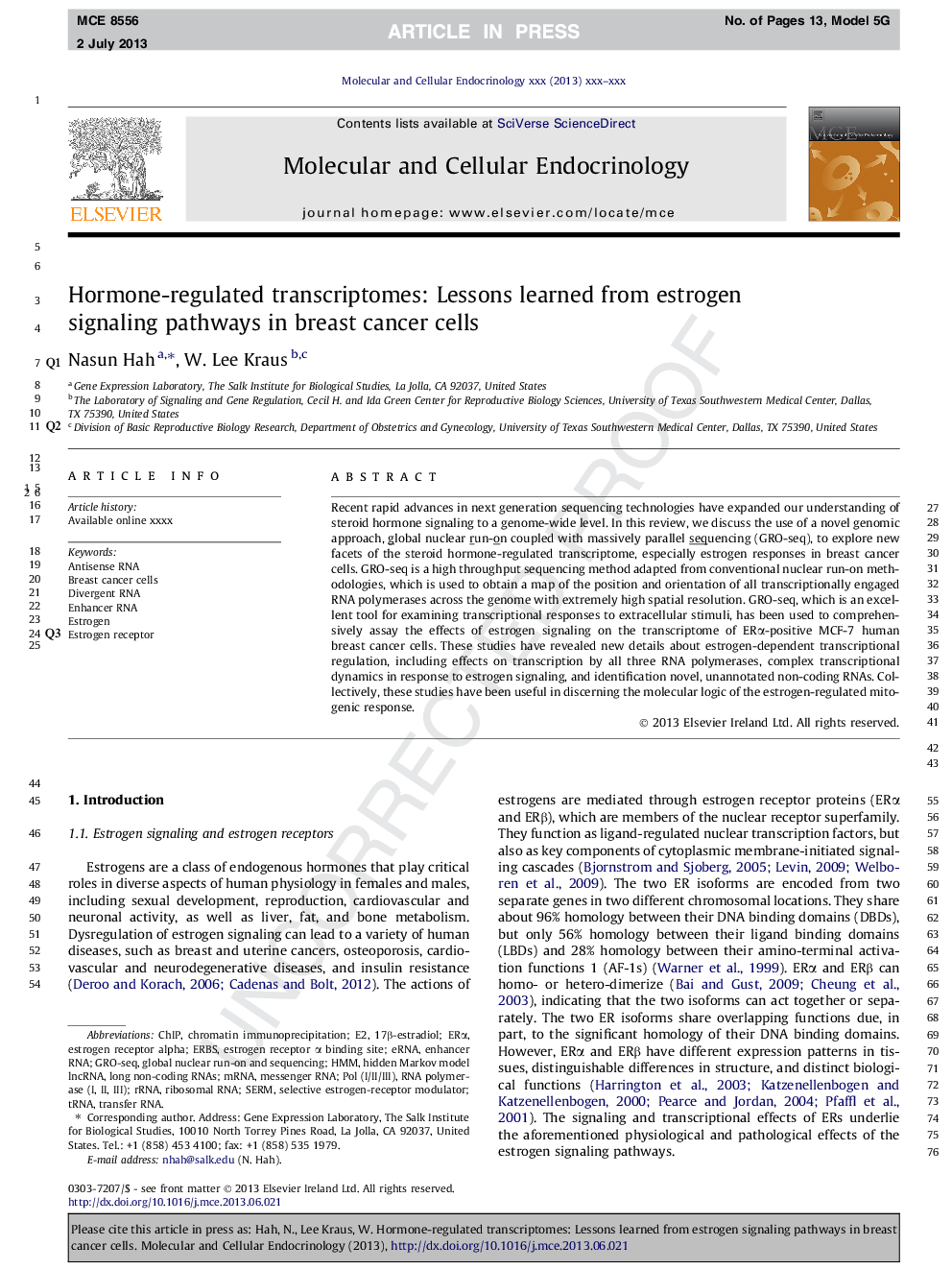| Article ID | Journal | Published Year | Pages | File Type |
|---|---|---|---|---|
| 10956171 | Molecular and Cellular Endocrinology | 2014 | 13 Pages |
Abstract
Recent rapid advances in next generation sequencing technologies have expanded our understanding of steroid hormone signaling to a genome-wide level. In this review, we discuss the use of a novel genomic approach, global nuclear run-on coupled with massively parallel sequencing (GRO-seq), to explore new facets of the steroid hormone-regulated transcriptome, especially estrogen responses in breast cancer cells. GRO-seq is a high throughput sequencing method adapted from conventional nuclear run-on methodologies, which is used to obtain a map of the position and orientation of all transcriptionally engaged RNA polymerases across the genome with extremely high spatial resolution. GRO-seq, which is an excellent tool for examining transcriptional responses to extracellular stimuli, has been used to comprehensively assay the effects of estrogen signaling on the transcriptome of ERα-positive MCF-7 human breast cancer cells. These studies have revealed new details about estrogen-dependent transcriptional regulation, including effects on transcription by all three RNA polymerases, complex transcriptional dynamics in response to estrogen signaling, and identification novel, unannotated non-coding RNAs. Collectively, these studies have been useful in discerning the molecular logic of the estrogen-regulated mitogenic response.
Keywords
Related Topics
Life Sciences
Biochemistry, Genetics and Molecular Biology
Cell Biology
Authors
Nasun Hah, W. Lee Kraus,
